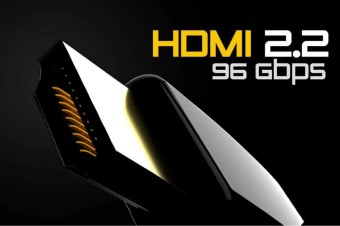Myths and Misconceptions About Modern Laptops
We independently test the products and technologies that we recommend.

1. The more cores, the better the laptop
The misconception "number of cores = power" originated in the early 2000s during the times of the first dual-core Intel Core Duo and AMD Athlon X2, and it was firmly established in the late 2000s with the arrival of the Intel Core lineup, which was marketed based on the number of cores. Today, performance is determined not by the number of cores, but by their architecture and energy efficiency, so a hypothetical new generation 4-core processor may be faster than an old 8-core one. In modern entry-level laptops, 4-core processors are most commonly used, which are more than sufficient for office work. In the mid-range, you often find laptops with 6-core processors in the Core i5/Ryzen 5 range, which are quite suitable for working with medium-complexity projects in applications like Photoshop, After Effects, Blender, or Cubase. Meanwhile, models with 8 or more cores are in a pure "Pro" category.
2. The more RAM, the better
As with processors, the statement "more RAM = better" was relevant in the old days of widespread economizing when office and study category laptops came with 2 or 4 GB, and users had to count the number of open tabs in a browser. The modern laptop market is much clearer and more homogeneous, with most inexpensive laptops having 8 GB of RAM, which is enough for the system to function and handle most everyday tasks. Mid-level models, including most gaming laptops, usually come with 16 GB of memory with an optional expansion option. Meanwhile, 32 GB of RAM or more is only needed for heavy editing, 3D work, virtual machines, or very power-hungry games. It's also important to understand that extra RAM often goes unused and doesn't actually make the laptop better, faster, or more powerful.
3. A good laptop needs a discrete graphics card
The misconception about the necessity of a separate video card dates back from ancient times, when integrated graphics lagged even when dragging windows or playing 720p video. Today, things are different: even simple integrated GPUs like the Intel Iris/Xe and AMD Radeon smoothly handle graphic interfaces, play high-quality video, and can run light games, while more powerful processors like the Apple M4 and Ryzen 7 8845HS can handle modern games at low or medium settings. Overall, a discrete graphics card is really only needed for those who work with 3D, do editing, or play heavy games. However, its presence is not always a plus because some laptops may switch improperly between graphics accelerators, leading to a fast battery drain even when just watching videos.
4. MacBook is the best choice for everyone

It's unlikely that anyone would argue that the MacBook are top-notch laptops in all respects. However, calling them universal is difficult. They are expensive, practically non-upgradable, and repairs can be complicated and costly even in an official service center (hello butterfly keyboards, full display replacements for minor damage, etc.). Another issue is the cost of memory, where Apple charges exorbitantly for an additional 8 GB of RAM and 128 GB in an SSD – in the case of Windows laptops, this amount is often sufficient for a higher-class model. Moreover, many of MacBook's advantages are only revealed when used together with other Apple devices, and without iPhone, iPad, and Apple Watch, much of the ecosystem's charm and convenience is lost. Supported software is also noticeably less than Windows solutions. Overall, the MacBook can be the ideal tool for designers, editors, coders, or musicians, but for engineers, CAD specialists, and especially gamers, it makes more sense to choose Windows-based laptops.
5. Lithium-ion batteries need to be completely discharged to 0%
This is definitely a misconception and also harmful to the battery, which we inherited from old nickel-cadmium batteries with the "memory effect." Lithium-ion technologies are structured differently: they do not tolerate deep discharges as well, regular discharging to zero reduces battery life, and the optimal charging range is approximately 20 to 80%. This is why some laptops and smartphones have a "battery protection" mode that limits the maximum charge to 80 – 85%.
6. All Chinese brands are trash
This misconception is based on outdated stereotypes and confusion between the country of manufacture and brand origin. Many do not differentiate between "made in China" and "Chinese brand": for example, Asus and Acer are assembled in China, but they are Taiwanese companies. Often, the opinion is formed based on an unsuccessful experience with ultra-budget laptops from Teclast, BMAX, Pixus, and other little-known brands, whose assortments include both fairly good models and outright lemons. In reality, Chinese Lenovo is one of the global leaders in the laptop market, Huawei produces modern ultrabooks with excellent screens and quality assembly on par with A-brands, and Xiaomi/Redmi may not dominate, but they are doing quite well in the middle segment.
7. A cooling stand solves overheating problems

The effect of a stand is greatly overestimated. Yes, it can reduce the temperature by a few degrees, especially if the laptop has bottom air intakes and a quality cooling system. However, if the overheating is caused by a weak radiator, dried-up thermal paste, poor ventilation inside the case, or other design features, the stand will not help. Moreover, many laptops have air intakes located on the sides or back, making bottom fans ineffective. A variation with active cooling with one or more fans can reduce heating a bit more, but even here the difference rarely exceeds 4-5°C. Overall, it's about providing a convenient desktop addition to set the screen at the right height and adjust the keyboard angle, while also reducing heating by a couple of degrees.
8. 4K resolution is always cool
Debates about 4K screens in laptops are akin to arguments that "gold-plated cables improve sound." In theory, 4K images will be slightly sharper thanks to the dense pixel grid, but in practice, only designers and photographers might notice the difference on a 13-15 inch screen, and even then when working with fine details at 100% zoom or closer. However, 4K has a downside: such a screen requires a more powerful graphics card, consumes more battery power, and can glitch when scaling the interface in outdated Windows applications. For this reason, 4K panels are mainly installed in expensive laptops, often not so much for utility but for status, to match the rest of the specs.
9. macOS is better than Windows
This is usually said by those who still remember the archaic times of Win 98 and XP but are not familiar with the modern Windows 10 and 11, which have made a giant leap forward in all respects and hardly resemble the old glitch-ridden systems. Additionally, the roots of the misconception "Windows is worse than macOS" grow from the fact that the comparison is not so much about the system but about the hardware, when a hypothetical RedmiBook for $700 is compared to a "pro" model costing 2-3 times more. But if you compare devices of the same level, Windows is no worse and at times even more flexible, especially in terms of customization and software support, including for games. Yes, some Win updates can come with small bugs, as the system operates on thousands of configurations, but macOS is not without its sins either and a new update can break something. Remember how after the major macOS Sonoma update in 2023, laptops with Apple M1 processors overheated and throttled like crazy, while the battery charge melted away before your eyes.
10. A gaming laptop is suitable for everything
Modern gaming laptops have become quieter, thinner, and more restrained in appearance, which is why they are increasingly being marketed as universal solutions on which you can both play and work, and watch movies. Partly this is true: the combination of a powerful processor and graphics card is indeed a must-have for tasks with AI, 3D graphics, VFX, and other resource-intensive scenarios. However, there is a downside. Firstly, such laptops are usually heavier and noisier than office or professional models and heat significantly under load. Secondly, even in models above mid-range, screens with accurate color reproduction are not always installed (MSI is especially guilty of this), which is critical for designers or photographers. Thirdly, the autonomy of "gamers" is often mediocre — especially with active work away from an outlet. So, yes, a gaming laptop can cover many tasks, but declaring it as a catch-all solution is still overboard.
11. AI modules in new laptops are a marketing gimmick

Riding the wave of artificial intelligence hype, it has started being integrated everywhere: from vacuums to laptops. In the case of laptops, "AI" hides two completely different things. The first pertains to utilities like Lenovo AI Engine, MSI AI, or Acer Sense, which automatically adjust brightness, fan noise, and energy consumption. Essentially, this is just smart optimization, not full-fledged artificial intelligence. The second case is more serious. New processors like Intel Core Ultra, Ryzen AI, Snapdragon X, and Apple M use separate neural processors (NPU) operating at the hardware level. They can suppress call noise, process images, speed up the assistant's work, and run generative functions without cloud connection. In our opinion, the second option appears more interesting and promising, but there are questions about effectiveness. The fact is, the built-in graphics often handle tasks faster than the NPU, local AI tools are often inferior to cloud ones, and most users find it easier to use ChatGPT or another cloud AI.
12. Any USB C charger will do
USB C is just a connector shape, not a guarantee of identical charging. In reality, different chargers vary greatly in terms of power and supported protocols. Some deliver a modest 15W, while others provide a full 100W or more. Not all chargers support Power Delivery, so a laptop will either not charge or will do so slowly. Therefore, the capabilities of USB C charging should be clarified in advance before purchasing.
Articles, reviews, useful tips
All materials







































































